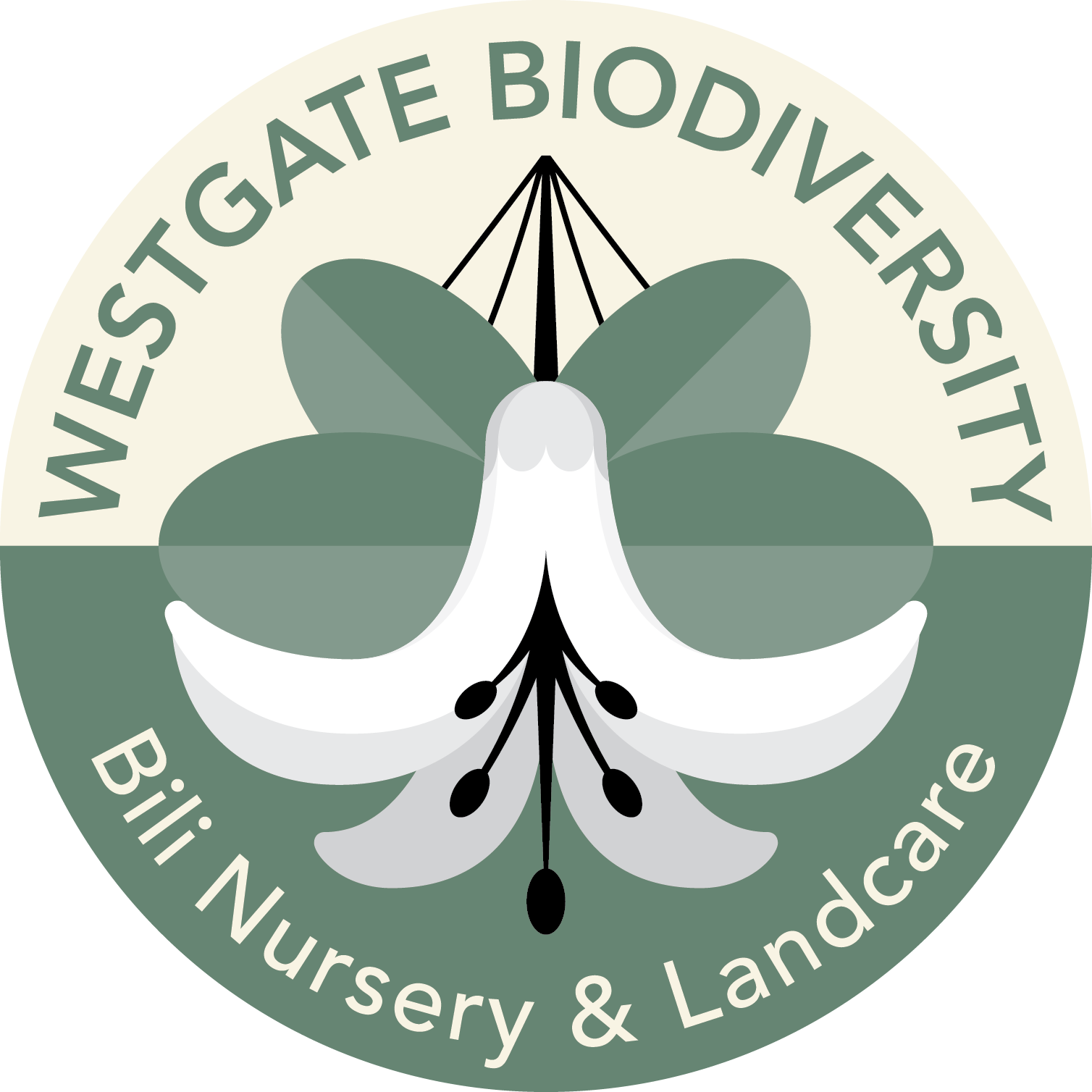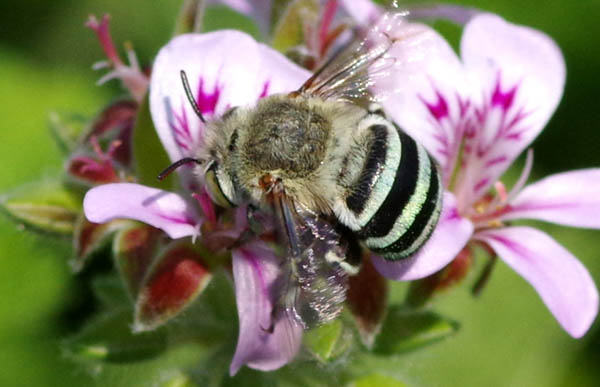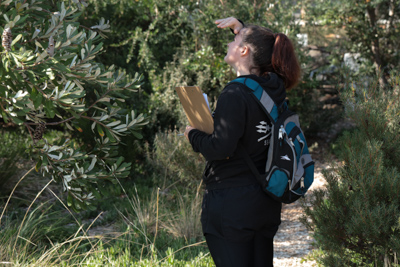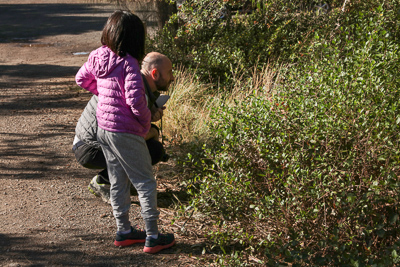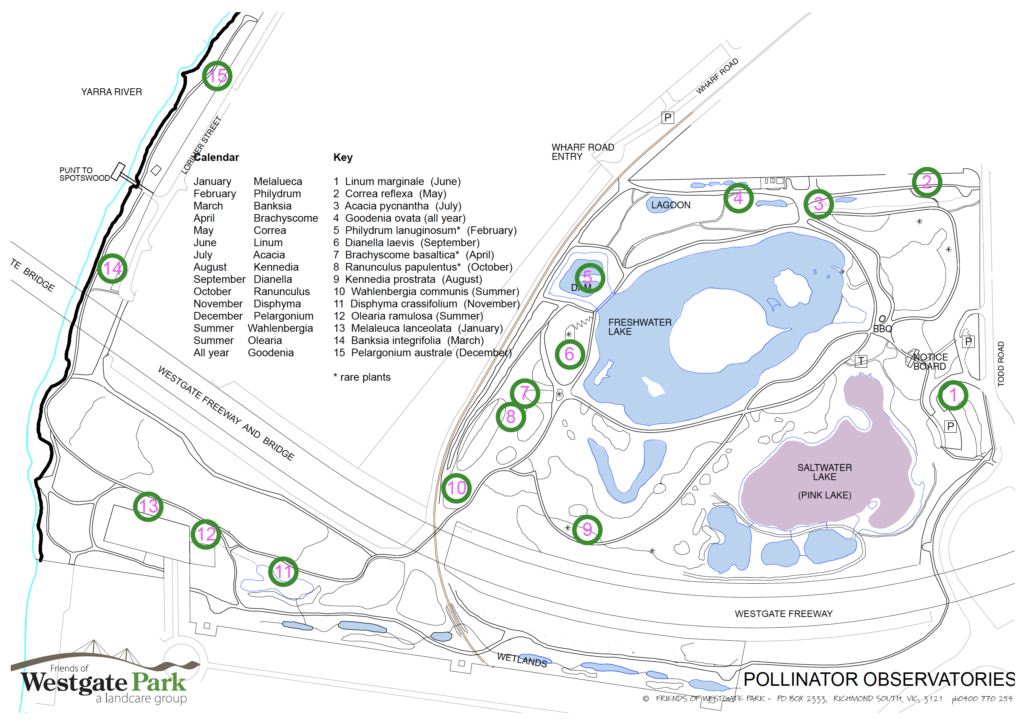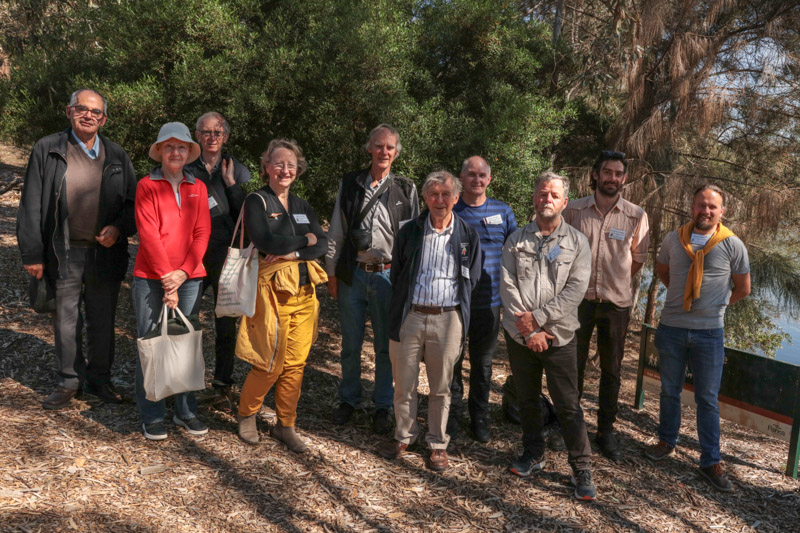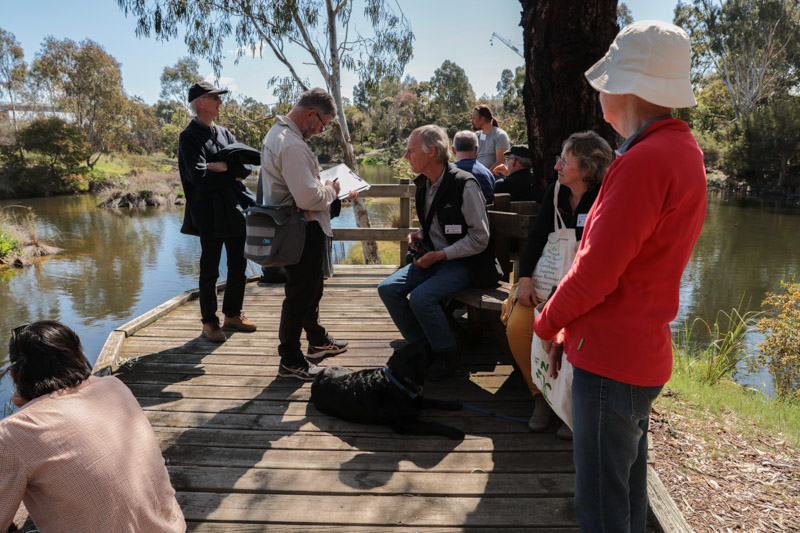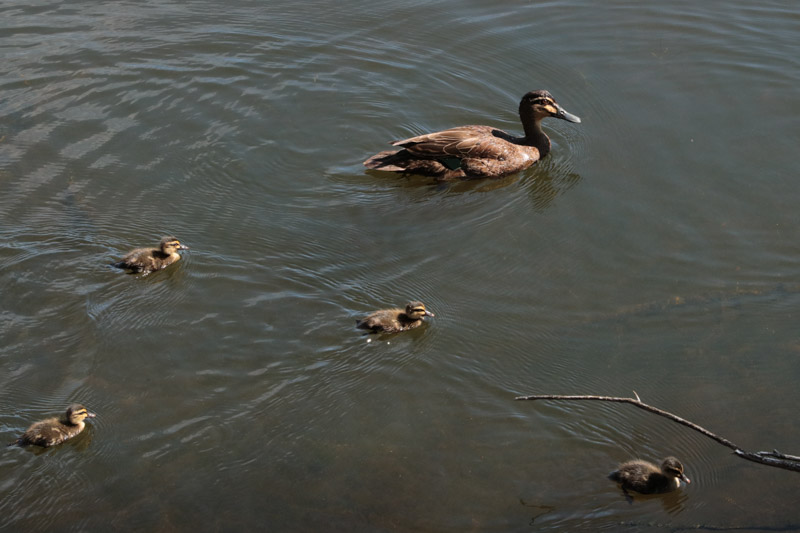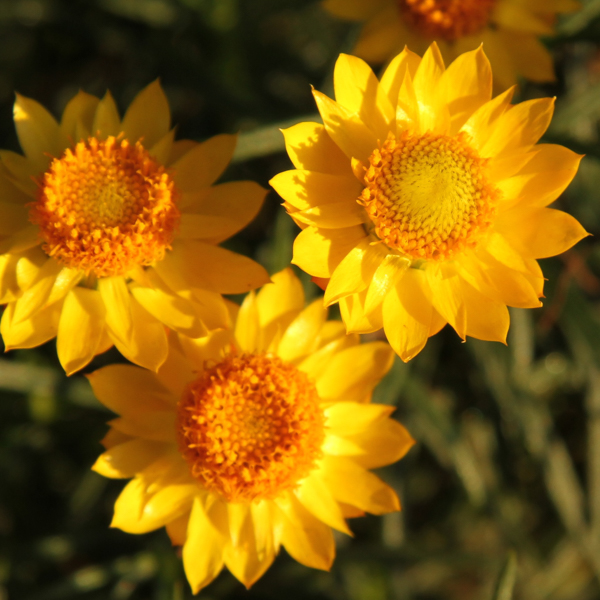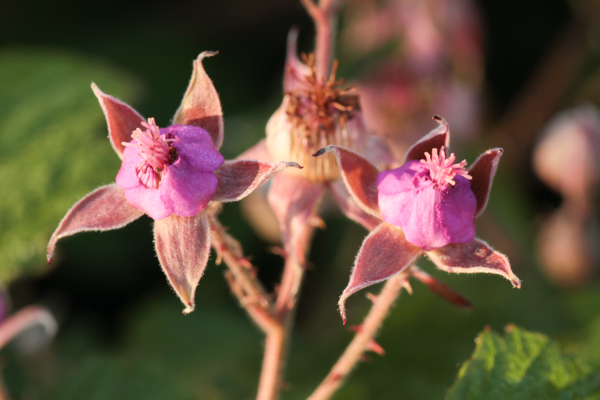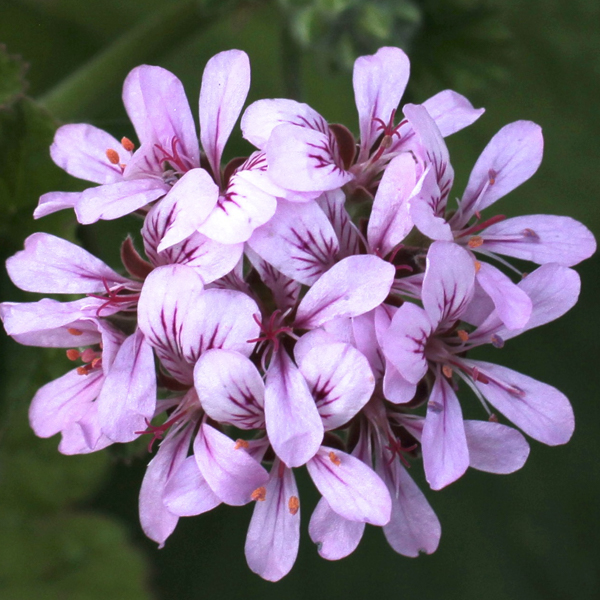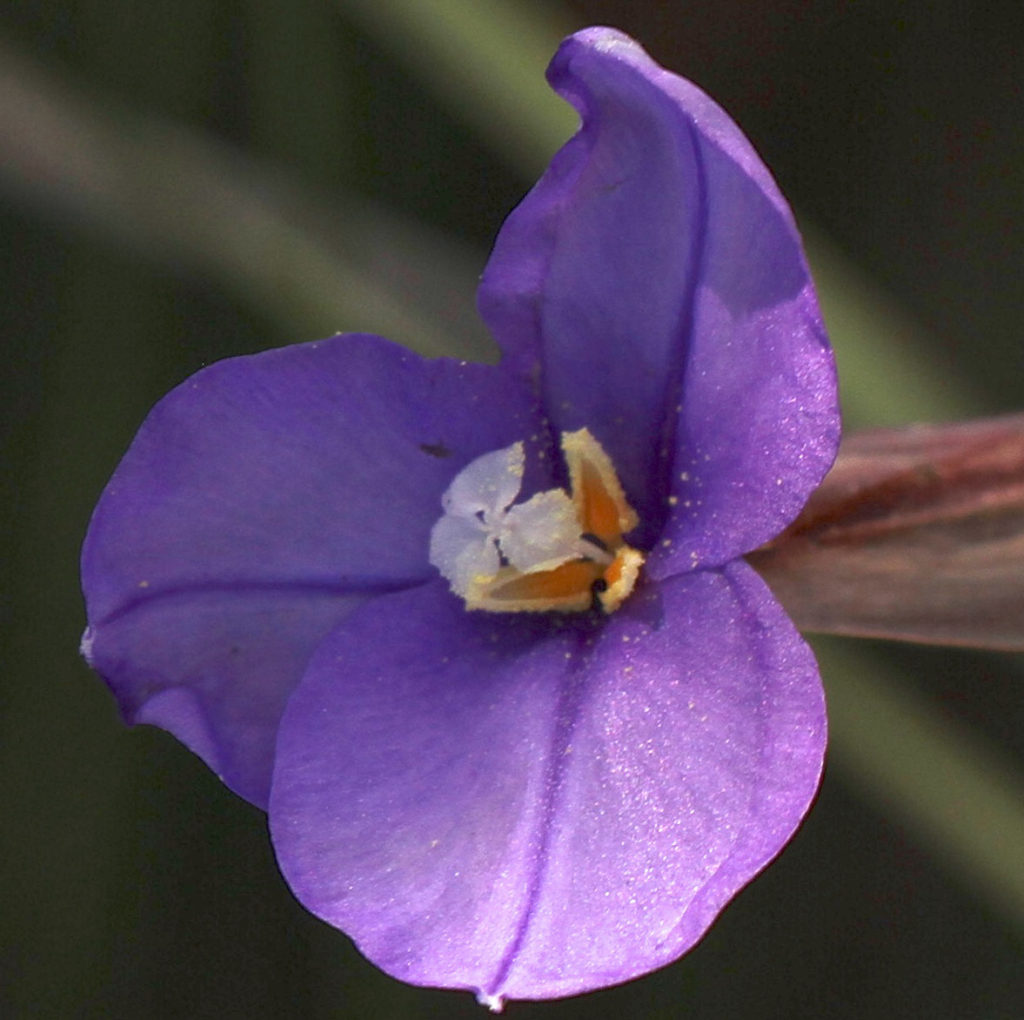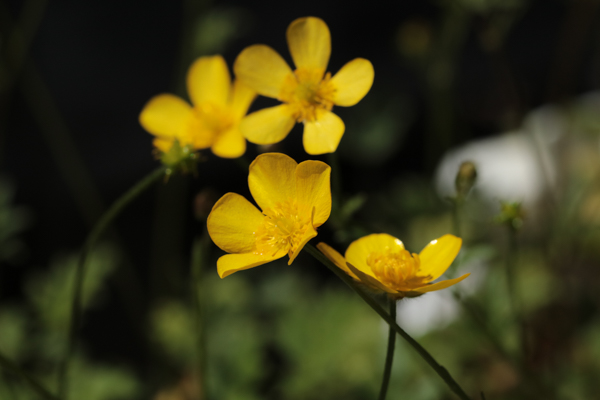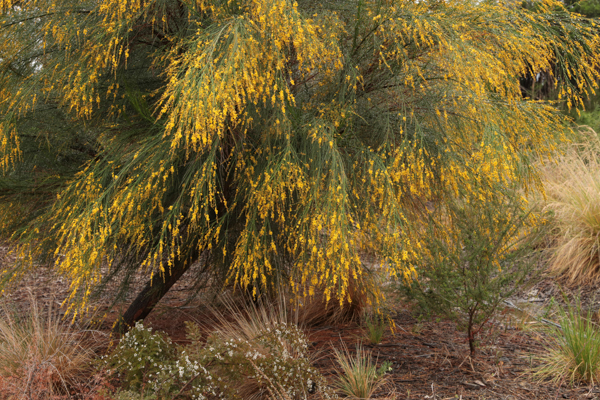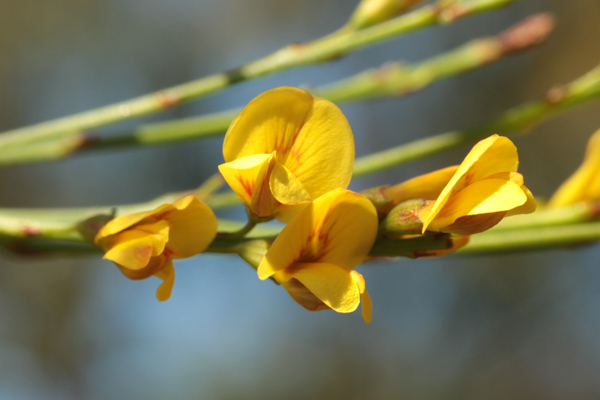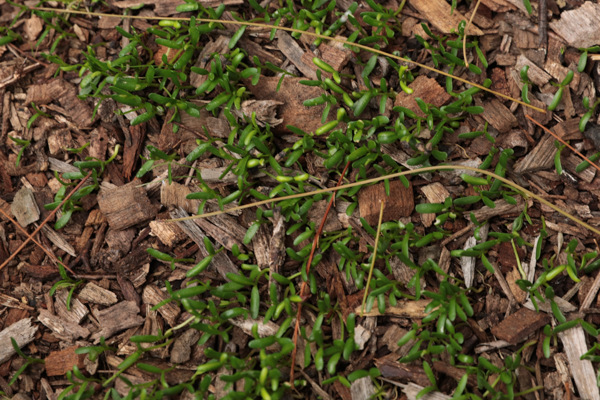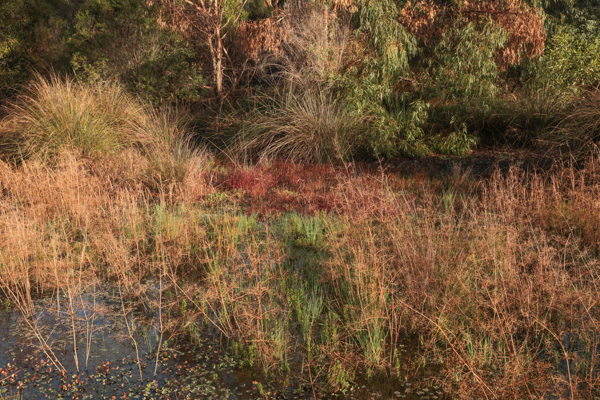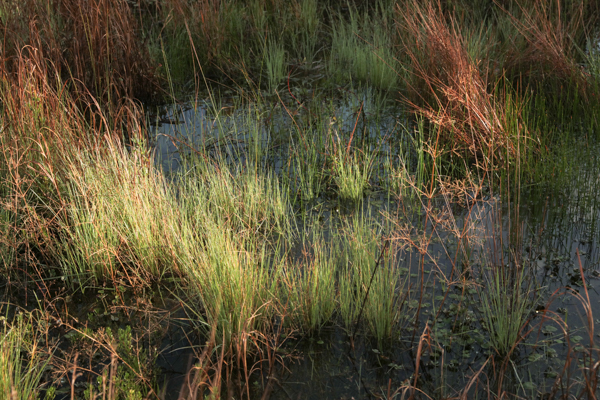Pollinators project findings

Invitation: Next Sunday, Sunday 27th October, Westgate Biodiversity will be wrapping up a two year research project conducted with RMIT – Providing for Pollinators. The project has been funded by the City of Melbourne and co-designed with (then) Friends of Westgate Park. At the workshop, Dr Luis Mata will present the findings of the project.
Here is the link to registration.
Background
A series of ‘pollination observatories’ were nominated by FoWP through the park. A different flowering plant was chosen for each month of the year. A range of different plants were chosen – shrubs, groundcovers, trees. They were also chosen on the basis of the existing health, abundance and persistence of those plants at particular locations.
RMIT researchers did monthly observations of each of the observatories. Seven workshops have been held to assist citizen scientists to identify and then observe insect pollinators at Westgate Park. The citizen science observations complemented the RMIT surveys and on several occasions the citizen scientists made observations new to the RMIT researchers.
For the last two years we have been observing and documenting the interactions between flowering plants and insect pollinators across a network of 12 ‘pollinator observatories’ in Westgate Park.
At this workshop, you will learn to identify several key insect pollinators that call Westgate Park home, including native and non-native bees and butterflies. We will then visit the pollinator observatories to make observations of plant-insect interactions.
Each time we have seen something unexpected just through observing more closely!
This is the final workshop of the ‘Providing for Pollinators’ project. We’re excited to share with you what we’ve learned about insect pollinators in Westgate Park and which plant species these pollinators are favouring.
We will also be celebrating the conclusion of the project with some food and a word or two.
Notes
– The workshop is suitable for both past attendees and first timers.
– The workshop consists of two consecutive sessions: the first at Port Education Centre and the second at Westgate Park. By registering, you agree to attend both sessions.
Session 1: Introduction to ‘Providing for Pollinators’ and the tools for monitoring them – held at Port Education Centre
Dr Luis Mata from RMIT will introduce you to a ‘Protocol to record ecological interactions between plants and pollinators using timed surveys‘ and a ‘Visual field guide for the identification of targeted pollinators’. These documents will be discussed and your questions about the field protocol and species identification encouraged. A handout questionnaire will test your capacity to successfully complete the field protocol and accurately identify the targeted insects. This is an open book shared session – not a scary test!
Session 2: Visit the pollinator observatories in Westgate Park
The workshop will move into Westgate Park to visit pollinator observatories and work with the tools learned in Session 1.
Providing for Pollinators is a research and community engagement collaboration between Westgate Biodiversity: Bili Nursery and Landcare (formerly Friends of Westgate Park and SKINC nursery) and the National Environmental Science Programme – Clean Air and Urban Landscapes Hub.
The project has been funded and supported by the City of Melbourne.
The Port Education Centre is kindly made available for the workshop by the Port of Melbourne.
FAQs – Getting there – so near, yet so far!
The Port Ed Centre is on the Port Melbourne side of the Yarra River. Set your GPS to 343 Lorimer St. Do not be led astray by your GPS to cross the Westgate Bridge! There is free car parking on Lorimer St.
Bus
Only bus 235 from Southern Cross Station operates on Sunday. Get off the bus at Defence Science & Technology (DSTO) and walk over the railway line to Port Ed Centre. (Note: the venue is about an hour’s walk from Southern Cross Station)
Bike
Port Ed and Westgate Park are a pleasant ride along the Yarra River. There is a shared path on the footpath along Lorimer St to Todd Rd, and a dedicated bike path along Lorimer St to Port Ed . There’s plenty of bike parking.
Field Naturalists visit
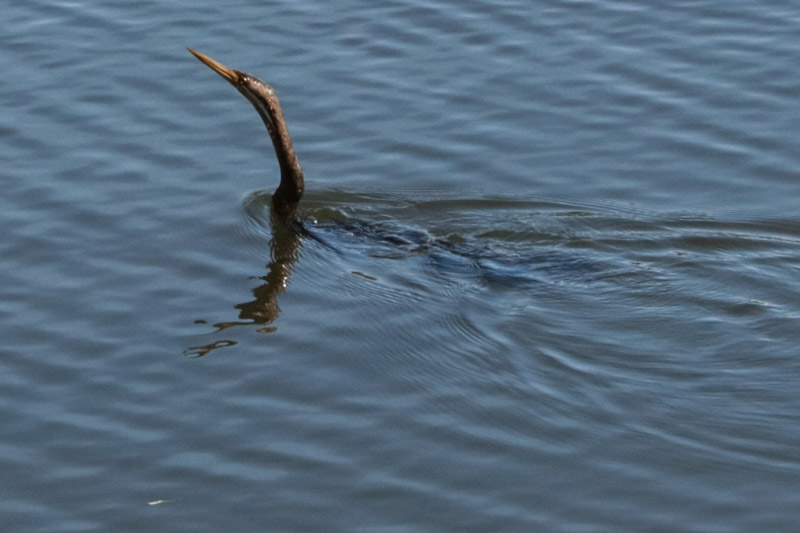
We were delighted to have participants in the Field Naturalists Club of Victoria Symposium come to Westgate Park for a Field Trip. After a long walk through the Park we paused at the Freshwater Lake lookout where firstly an Australian Darter and then a family of Black Ducks entertained us.
Darters are unusual in that they swim long distances underwater actively pursuing fish prey and, other than their sinuous neck and long sharp beak, their body remains submerged. They are only occasionally seen at Westgate Park so this sighting was a treat.
Best friends Award
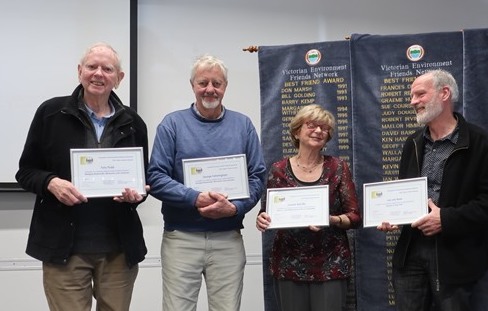
Tony and George shared the Victorian Environment Friends Network Best Friends Award 2019, supported by a contingent of members of Westgate Biodiversity.
Here’s how their contribution was described:
George provides the knowledge base in how, what and where to plant. He also knows all our birds and assists in identification. He is generous with this knowledge and enjoys sharing it with those around him.
Tony manages to attract and retain volunteers (equivalent to 10 full time workers), delegating tasks and including everyone in his plans. He liaises with Landcare Australia to ensure a steady stream of corporate volunteers as well as the job agencies which manage the Work for the Dole program. He is also the one who suggests and organises social events and field trips which build strong bonds within the volunteer community.
Manager Position Description

Position Description – Manager
POSITION TITLE: Manager
DATE: October 2019
HOURS: Full time
TYPE OF EMPLOYMENT: Permanent
PLACE OF EMPLOYMENT: Westgate Park & Bili Nursery in Williamstown Road, Port Melbourne
Organisation Overview
Westgate Biodiversity: Bili Nursery & Landcare Inc. is a not for profit organisation established for the purpose of (a) enhancing and protecting the natural environment and its biodiversity and (b) educating our members and the wider community on the importance of protecting and enhancing the natural environment, urban biodiversity, and healthy environments by growing and planting locally indigenous plant species and encouraging volunteering and community engagement with the natural environment. It:
- Provides revegetation and maintenance of locally indigenous plants for Westgate Park.
- Operates Bili Nursery to produce and supply indigenous plants to Westgate Park, local government, landscape contractors and the community.
- Advocates for biodiversity through planting indigenous species, for public open space and for members and the general community to volunteer and engage with nature
It is governed by an elected Committee of Management and its sub committees and has paid staff and volunteers.
Position goals
- To manage the organisation and ensure it meets its operational requirements and strategic objectives
- To develop business strategies that grow the organisation and continuously improve its financial stability
- To advance biodiversity through promotion of indigenous vegetation and public engagement in nursery and park activities.
- To measure the effectiveness of what we do
Key Responsibilities, Duties and Roles
General
- Facilitate development and implementation of the Strategic Plan and regularly report progress to the Committee of Management and its sub-committees
- Support the decision-making of the Committee with recommendations and business cases for new initiatives, as required and attend Committee meetings.
- Identify operational and strategic risks and develop mitigation strategies.
- Develop activities and programmes for community engagement
- Make recommendations to the Employment, Volunteers & OHS Sub Committee in managing staff employment and overseeing volunteer recruitment.
- Develop and adhere to the approved annual budget
- Assist the Treasurer in keeping accurate financial records and reporting finances to the Committee
- Ensure compliance with current laws, including OH&S and contractual obligations and report on these to the Committee
Specific Responsibilities
- Provide support to the Committee and sub-committees in planning & development of the new works compound, community spaces and nursery
- Allocate and oversee work priorities and schedules across the nursery and park, in consultation with the Nursery & Landcare Sub Committee, team leaders and the Volunteer Coordinator
- Ensure that OH&S policies and procedures are effective in providing a safe, supportive working environment and comfortable working conditions for all staff and employees
Bili Nursery
- Build and maintain trusting partnerships and relationships with councils, contractors, other nurseries and other Landcare groups to build the business
- Grow the retail nursery business including online sales of plants, seeds and merchandise, workshops
- Develop a propagation schedule and encourage customers to place orders in good time
Landcare
- Deliver on the Landcare Strategy 2019 for plant maintenance and revegetation projects
- Liaise with park manager as appropriate
- Encourage community engagement in volunteering, citizen science and events
Business development
- Oversee communications – website, online shop, social media, email communications – and marketing
- Oversee grant applications and acquittal in consultation with Volunteer Coordinator and team leaders of Bili Nursery and Bili Landcare.
- Maintain a good knowledge of best practice in nursery and revegetation activities and in current markets
Organisational Management and Team Work
- Organise and lead regular team meetings and build a culture that encourages high quality work and relationships
- Seek out staff development opportunities and actively participant in own role development opportunities
- Conduct performance reviews of staff
Relationships and Accountabilities
Reports to: Committee of Management and Sub Committees
Supervises directly: Landcare & Bili Nursery Team Leaders
Works closely with: Landcare Volunteer Coordinator
Key relationships
- Committee of Management, Sub Committees
- Work for Dole service providers, members of the community, environmental groups, corporate groups, appropriate personnel in Local, State and Federal Government Departments
Accountability and extent of decision making
- Required to regularly consult with and report to the Committee regarding overall work directions, operational plans and in the development of new initiatives and policies. (See Delegations Policy)
- Is responsible for ensuring that appropriate regulations, standards and codes are adhered to together with relevant legal, professional, and ethical obligations and particular contract specifications
Key Selection Criteria
- Qualifications in nursery management, conservation and land management and/or extensive experience in bushland revegetation.
- Demonstrated team leadership and project management skills
- Exceptional communication, interpersonal and liaison skills with a strong emphasis on building networks and relationships with key stakeholders such as community organisations, government bodies and internal personnel.
- Ability to effectively relate to and engage with a wide cross section of the community and have a passion for local environments and keen interest to spread that passion to volunteers
- Demonstrated understanding of and experience in adopting appropriate risk management and cost effective approaches to program delivery.
- Proven ability to work autonomously as well as a part of a dynamic, targets and outcomes focussed team.
Other relevant skills, knowledge and experience
- Excellent team and people management skills with the ability to engage with a cross section of the community
- Understanding of local bushland regeneration techniques and plants.
- Knowledge and experience in running a plant nursery
- Effective negotiation, problem solving, and conflict resolution skills
- Administrative skills including record keeping and IT
- Excellent organisational and analytical skills
- Skills in managing time, setting priorities, planning and organising own work to achieve objectives efficiently within available resources and within a set time frame.
- Good communication, interpersonal and negotiation skills
- Ability to gain the co-operation and support of environmental and other community interest groups and organisations and interagency staff in the implementation of projects.
- Ability to effectively liaise with and discuss specialist bushland techniques and nursery management and issues with counterparts in other organisations.
- Ability to facilitate small group discussions to effectively resolve issues.
- Experience in managing and coordinating volunteers desirable.
- Current first aid and Working with Children certificates required
Spring sale 6, 7 & 8 Sept
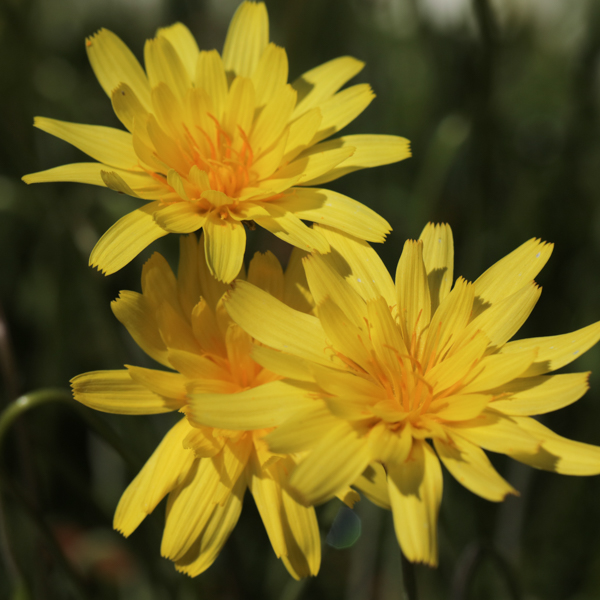
Local native plants, wildflowers, trees, shrubs, grasses and bushfoods will be discounted – tubestock ($2.50), potted plants ($5) and there will be plant giveaways so get in early!
10am to 3pm, Friday 6th – Sunday 8th. Please forward the flyer below to anyone you think might be interested.
525 Williamstown Road, Port Melbourne (next to Port Melbourne Football ground and close to North Port stop 127, tram 109)
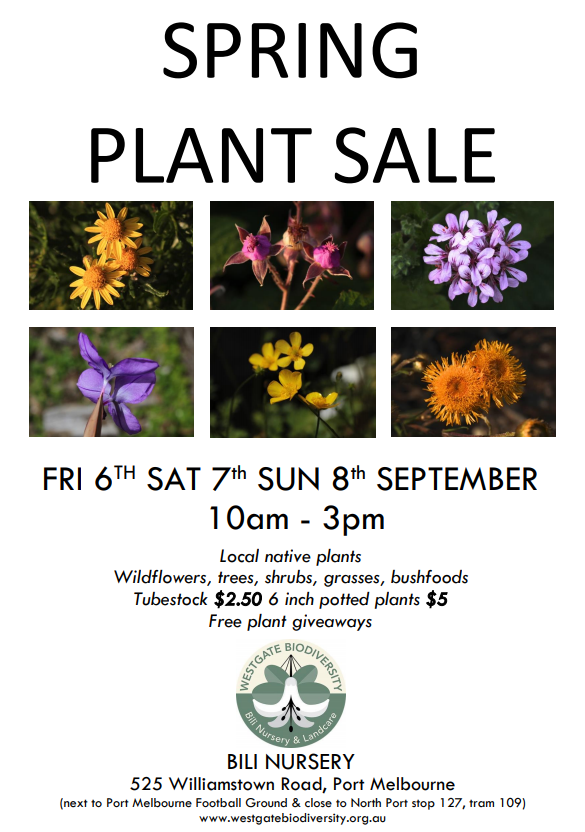
August bird survey
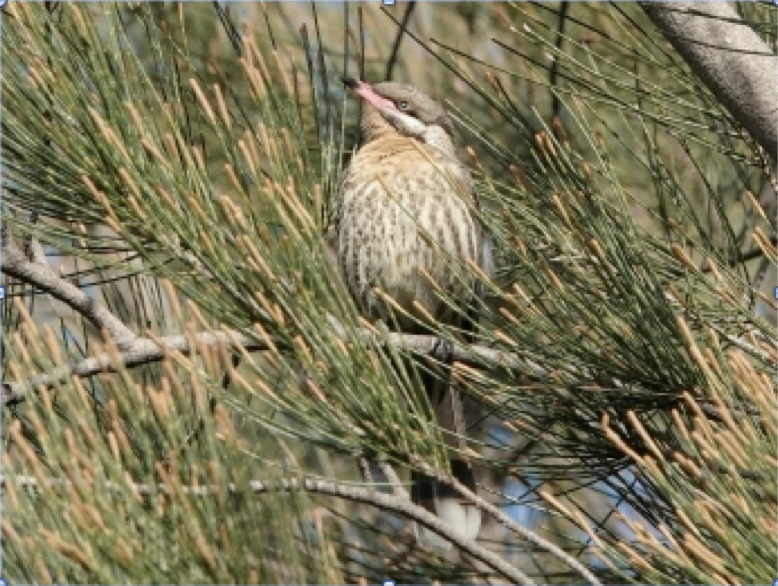
Over 40 mm of rain in July turned the park around; vegetation recovered rapidly, although many dead trees and shrubs remain from the preceding dry months. Resident species such as Superb Fairy-wrens and White-plumed Honeyeaters are present in high numbers, along with a dozen or so Spotted Pardalotes, confirming a healthy supporting ecosystem. However the extensive emergence of weeds in mulched areas will need attention.
Almost all waterbirds recorded in this survey were on the large freshwater lake. As with last survey, Chestnut Teal and Pacific Black Duck numbers are low, but there are more Hardheads than usual.
The large saltwater lake is now dark brown with very little bird life – just a pair of Chestnut Teal.
A highlight was observing four Australasian Shovelers (two pairs) on the large freshwater lake – the first since August 2016. The species is generally recorded 2-3 times annually, but was also absent from 2010-1.

Regeneration
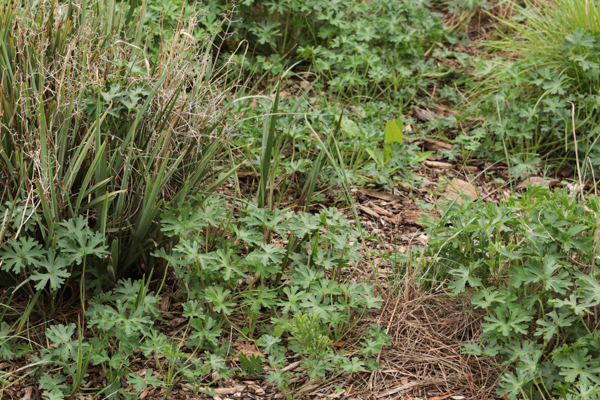
Our aim in putting plants in the ground is to improve biodiversity – that’s a given. But what we most want to see is sustainability – plants healthy and reproducing, kept in balance by natural processes.
Very dry conditions and, until the last few years, hundreds of rabbits, has meant very little regeneration but this autumn/winter has been quite wet and new shoots and self-seeded plants are appearing everywhere.
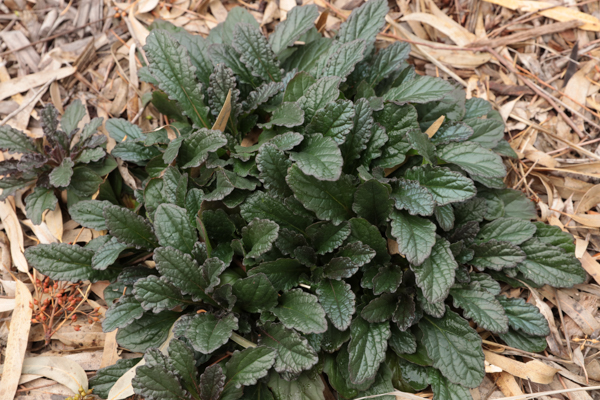
Ajuga australis 
Geranium carolinii (Endangered Vic) 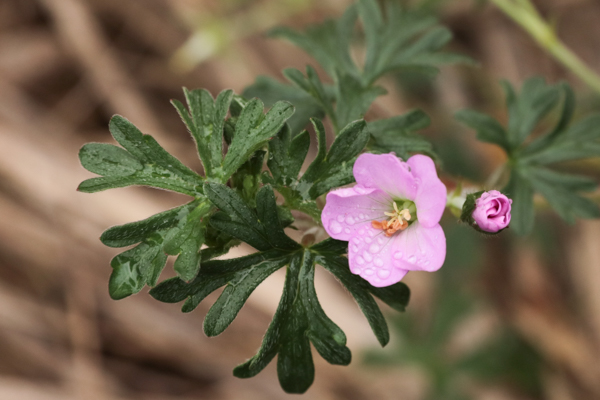
Geranium carolinii 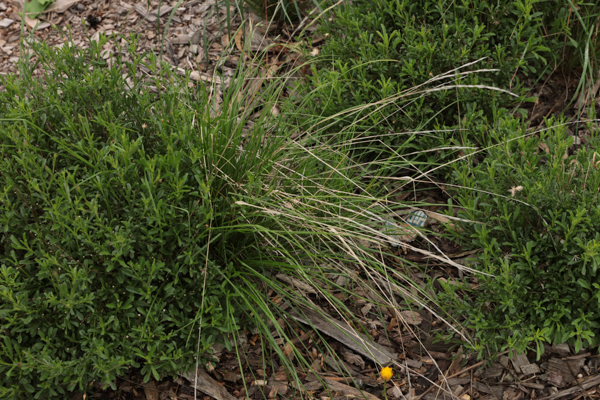
Vittardinia cuneata var. cuneata 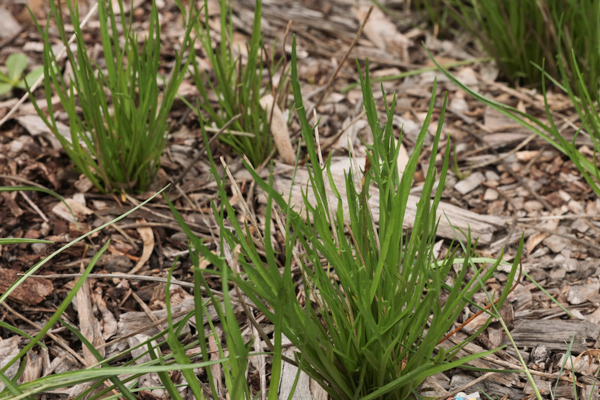
Microseris lanceolata – Murrnong 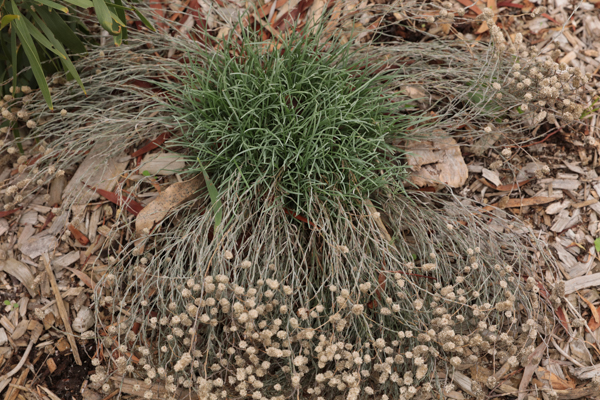
Calocephalus lacteus – Milky Beauty-heads
In the Southern Wetlands, Viminaria juncea, a leafless, fast-growing shrub was laden with red and yellow pea flowers last summer and now seedlings cover the ground and these can be used to grow up for the next generation Native Broom.
The Windmill Soak dried out completely over summer but is now full of water and frogs. The beautiful aquatic fern, Marsillea drummondii – Nardoo and the Alisma Plantago-aquatica – Water Plantain, are some of the many plants regenerating.
Bird’s nests (the fungal sort)
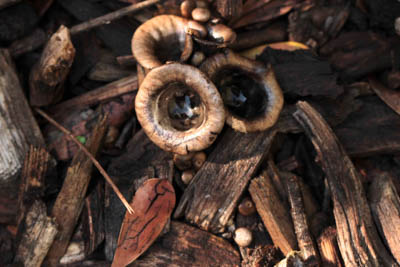
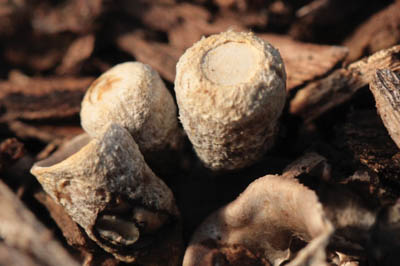
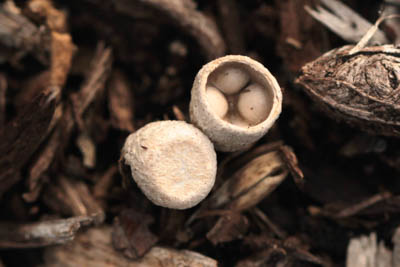
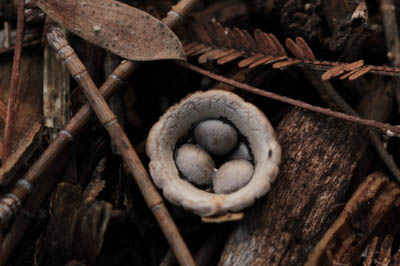
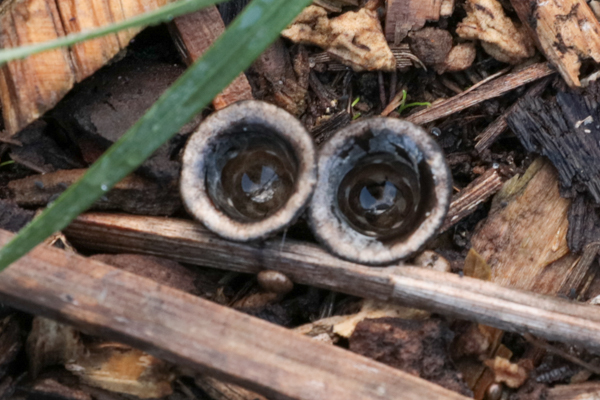
Cyathus Olla
The fungi we see above ground are the sporing bodies – much like fruit on plants – and they disperse tiny spores to produce the next generation. Methods of dispersal are hugely diverse and, in this, Bird’s nests are particularly interesting.
Shaggy receptacles, about 15mm in diameter, push up to the surface and the cap comes off to reveal 4 or 5 flattened egg-shaped sacs – peridioles – inside which are the spores. While most fungi use wind for dispersal Bird’s nests await rain drops to fall on their cup and the peridioles are ‘splashed out’. These can land a meter or so away. Cyathus peridioles are attached to a fine thread which is sticky and can adhere to grass stalks which are in turn eaten by animals, thus spreading spores further through dung.
New coral
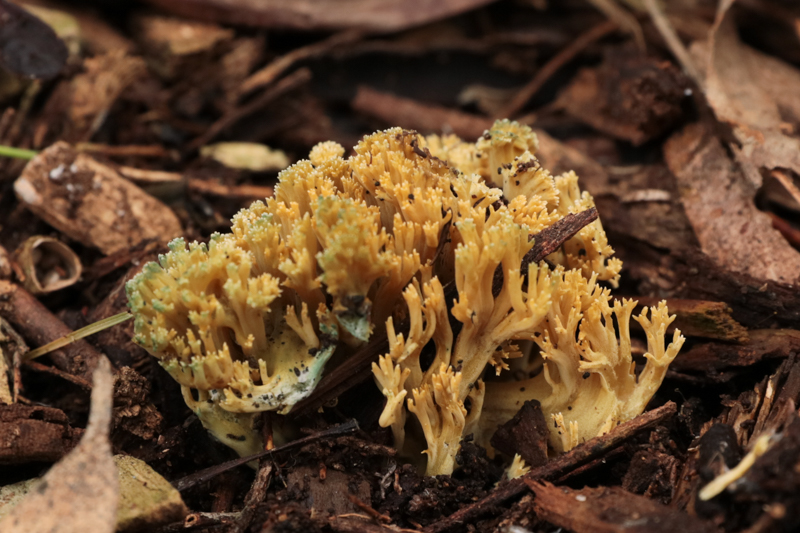
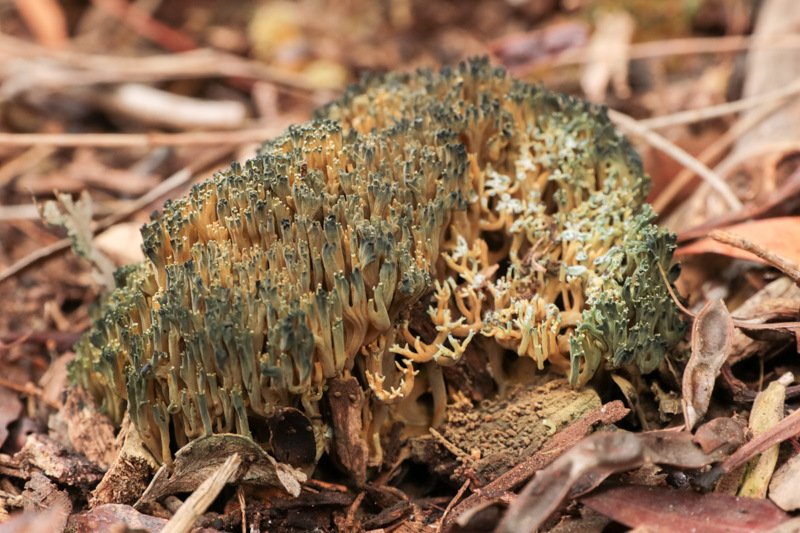
Ramaria abietina 
Ramaria abietina
Ramaria abietina is the first coral fungus to be recorded in the Park, so-called because they resemble marine corals. Corals are different from agarics and boletes in that the spores are on the external surface of the upper branches. R. abietina is a species found in woodlands and it becomes green as it ages or if bruised. These were in a cluster near a mature Eu. Viminalis on Woodland Walk – a part of the park that now has quite good leaf and bark litter.
